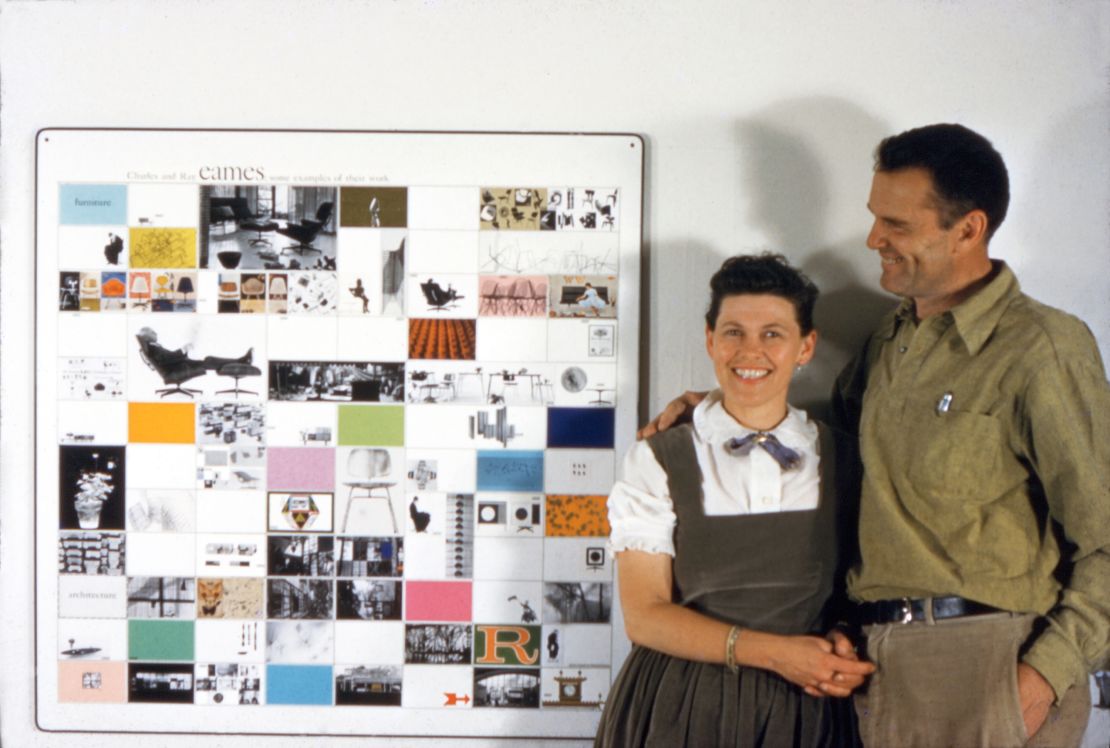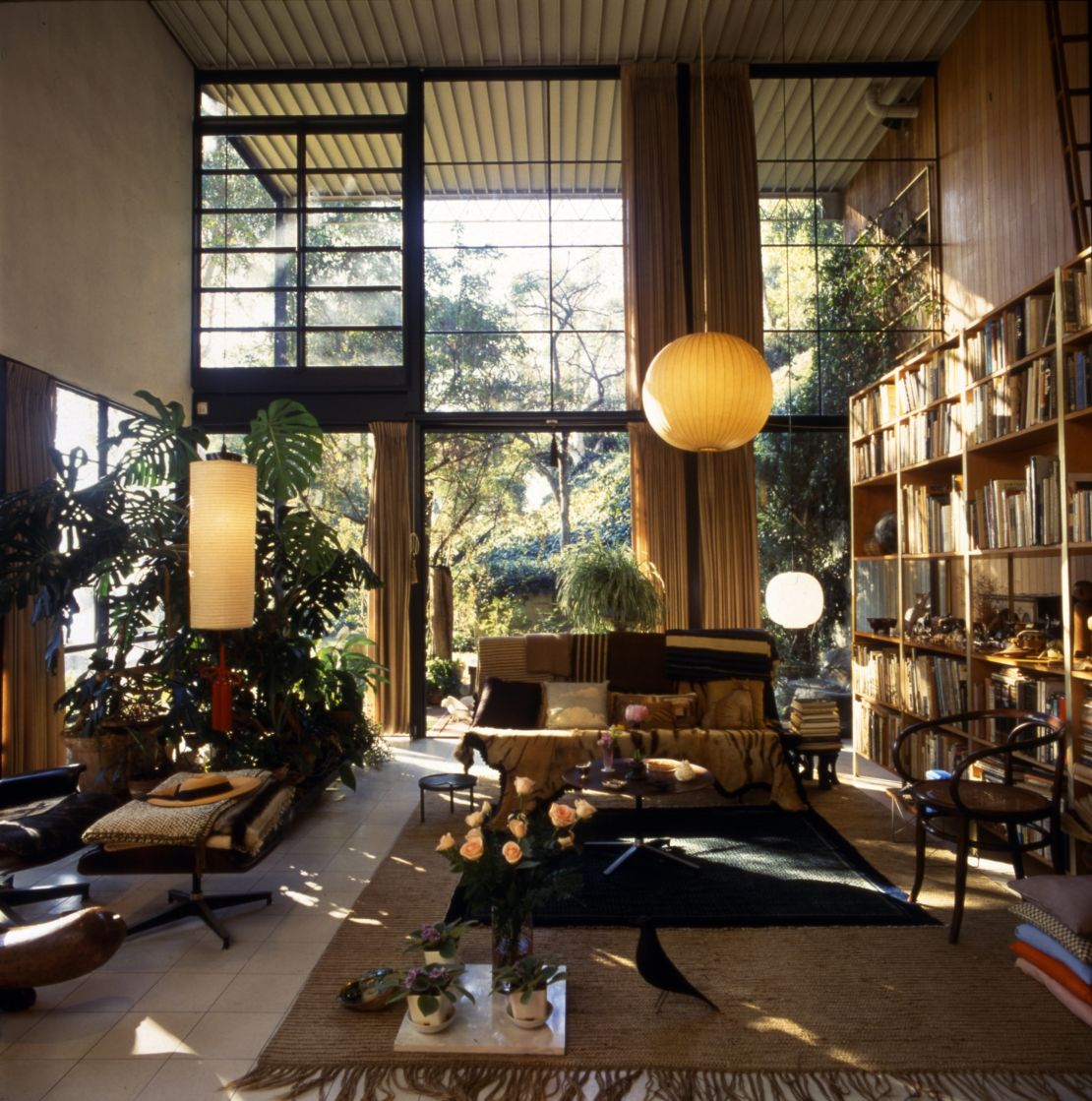Story highlights
A new exhibition at the Barbican Art Gallery in London celebrates the legacy of Charles and Ray Eames
The Eamses were two of the most influential designers of the 20th century
Their designs are replicated to this day, and originals are quite valuable
Their story is also chronicled in The World of Charles and Ray Eames (Thames & Hudson)
As a long-time fan of American designers Charles and Ray Eames, and proud owner of a couple of examples of their classic furniture, it was with eager anticipation that I attended a new exhibition celebrating their creative legacy at the Barbican Art Gallery in London.
The Eameses were among the most influential designers of the twentieth century and many examples of the products and furniture developed at the Los Angeles office they founded during the Second World War remain in production today. Charles died in 1978 and Ray a decade later, but their influence on numerous design disciplines has endured and is supported by the work of the Eames Office, which gave the Barbican’s team access to its extensive archive.
The World of Charles and Ray Eames is the first British exhibition dedicated to the couple since 1999, and aims to look beyond the furniture designs that are familiar to so many of us as a result of their ubiquity in hotels, restaurants and airport terminals.

“Most people understand their work through the furniture, but the rest of the office’s output, like the films they made and their graphic design, is only known to people with those specific interests,” curator Catherine Ince, who edited the extremely informative catalog with Thames & Hudson, tells me.
“We felt there is a lot to say about the lesser-known aspects of their work so we tried to focus on bringing to light projects that were maybe temporary or unrealized and are only survived by documentation. This approach helps to show the range and depth of work they undertook and the things that preoccupied them.”
Offering in-depth insight into their contribution to the fields of architecture, furniture design and visual communication, the exhibition features over 380 works ranging in scale from a beautifully simple business card to the enormous molded plywood nose cone of an experimental military aircraft.

Furniture fans will not be disappointed – full-scale models of early molded plastic chairs and a series of prototypes for seating in plywood, fiber glass and metal feature prominently – but an effort has been made to portray the diverse output of the Eames Office over four decades.
Indeed, if there is a dominant theme to the exhibition’s curation, it is a focus on the office’s ability to communicate ideas using a wide range of techniques and media. Several photographic and film projects developed for corporate and government clients demonstrate this pioneering multimedia approach. Among them is a recreation of the multi-screen film presented by IBM at the New York World’s Fair in 1964-65, which was recently restored and digitized by the Library of Congress in Washington D.C.
The couple’s architectural output is represented by drawings and models including a specially commissioned 1:50 scale model of two Case Study Houses designed in the 1940’s. The houses were built using an innovative system of prefabricated components and the Eameses lived in one of them from its completion in 1949 until the ends of their lives.
The cluttered and quirky interior of the Eames House is depicted in photographs and, together with shelves displaying collections of tin toys and Mexican masks, helps gives a sense of the couple’s eclectic tastes and wide-ranging sources of inspiration.

If one thing is lacking it’s a more intimate sense of the Eameses’ personalities and lives outside of the office. Ince says that she felt it was more important to tell their story through the work and rightly points out that “their character is present in everything they did.” Several examples of letters, notes and gifts they exchanged provide some insight into their relationship, but one leaves with a feeling more akin to having just watched a solid documentary than a gritty warts-and-all biopic.
Eames fans visiting the exhibition will enjoy discovering new aspects of the duo’s multidisciplinary output and absorbing its wealth of previously unseen material, while newcomers to their work will be impressed by its ambition and continuing relevance.
As I write this I’m sitting comfortably in a chair they created in 1958, which embodies the enduring legacy of these forward-thinking and fundamentally humanist designers.
The World of Charles and Ray Eames is on at Barbican Art Gallery from 21 October 2015 - 14 February 2016. The coinciding catalog from Thames & Hudson, is out now.















